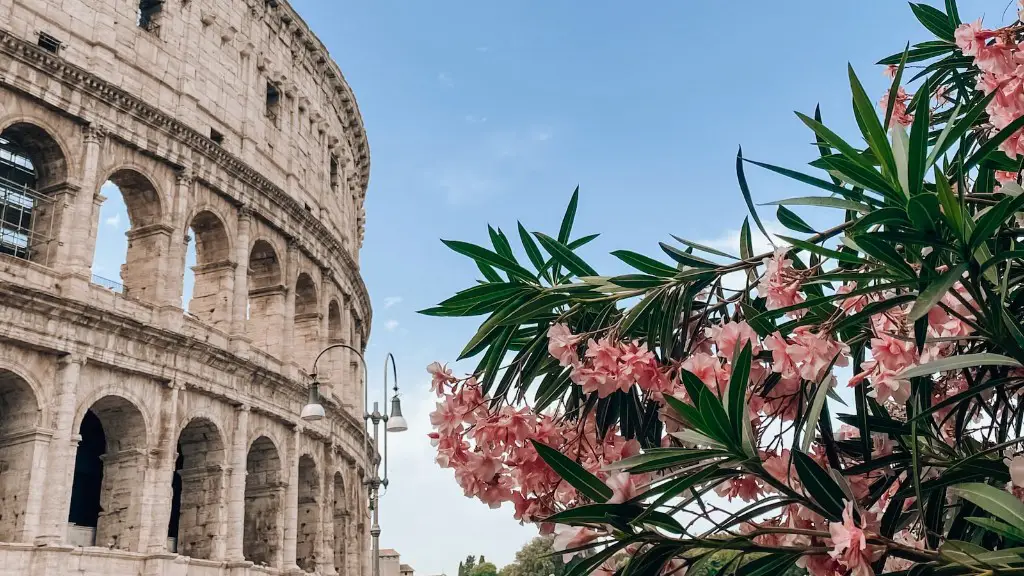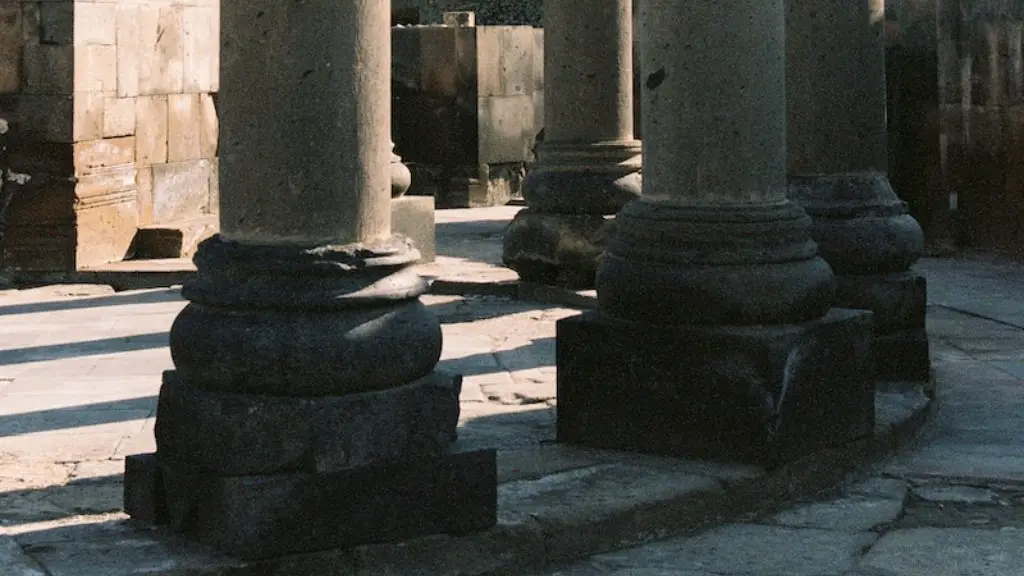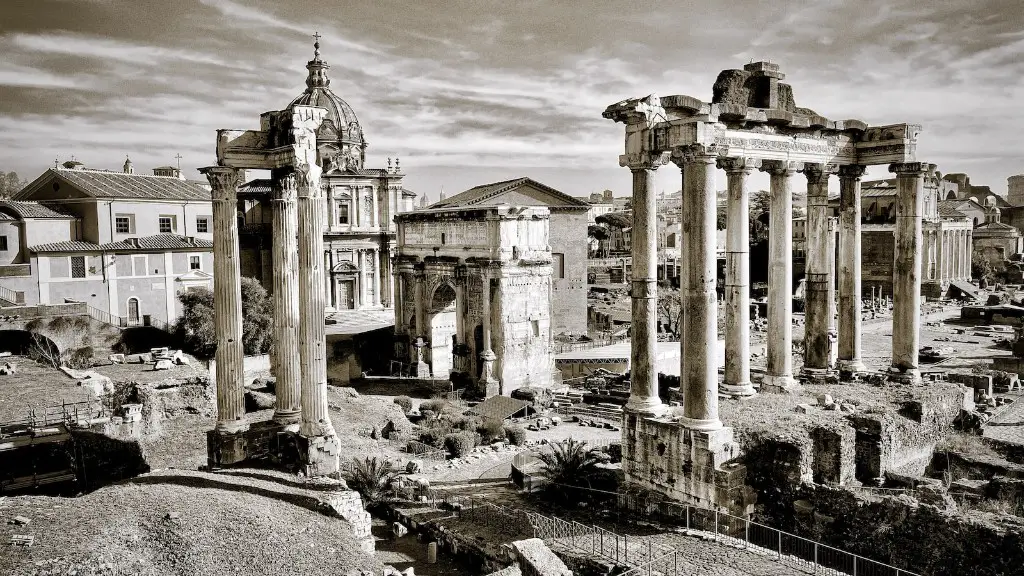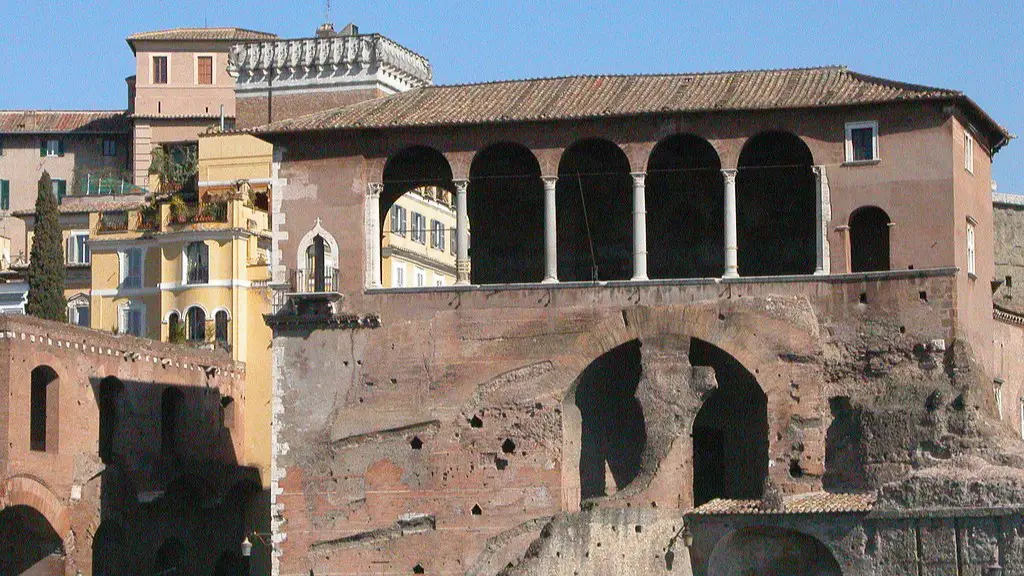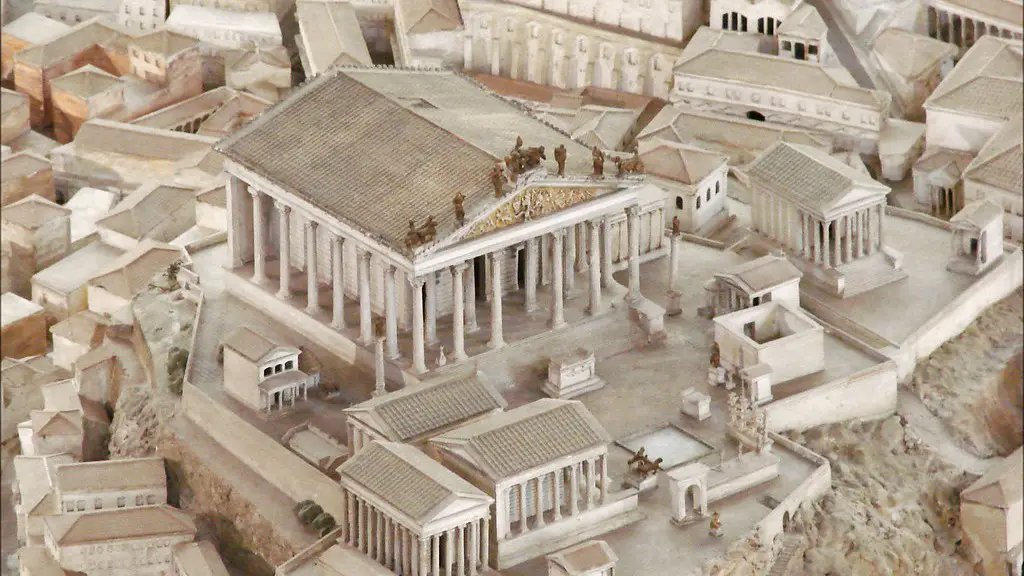Hotels in Ancient Rome
Traveling in the ancient world was not an easy task, as it was often quite dangerous. Sleep was also a luxury, as travelers were more likely to come across wild animals and dangerous people along the roads. Fortunately, in some areas, the traveler had access to certain places that provided lodging, comfort, and protection in exchange for a fee. One of these places was a “hotel” in Ancient Rome.
In Ancient Rome, the “hotel” was known as a hospitium and was essentially a private residence or inn that provided accommodation to travelers. The hospitium was usually owned by affluent individuals of the city who set aside multiple rooms for travelers to use. In exchange for a fee, travelers were provided a room to sleep in and could enjoy the same sort of culinary luxury that the host might have enjoyed. In some cases, the hospitiums even boasted communal baths for those who were keen on taking a soak.
That said, things weren’t quite as luxurious as if they were to stay in a modern-day hotel. In most cases, a hospitium was simply a house that the owner would take in travelers to fill a bed and meet the fees. This often meant that multiple guests would be sleeping in the same room, and there was no guarantee of privacy. Facilities such as shared baths and hot water were limited, and the entire house had to share what was available in terms of amenities.
Furthermore, when compared to modern-day hotels, hospitiums weren’t as highly regulated either. This meant that there was a chance of meeting unsavory characters, as the city of Rome had strict laws regarding the admission and security of its guesthouses. As such, the occupiers had to be careful when choosing the hospitium they wish to stay in.
Historians, on the other hand, note that hospitiums were more successful during the Republic period due to the rise in trade and commerce. This allowed hospitiums to be better regulated, often times resulting in improved quality of stay. During this time, it was also not uncommon to find additional services such as libraries and entertainment being offered, although they were generally reserved for the wealthier and more influential travelers.
All in all, it is clear that hotels in Ancient Rome had many of the same features that we might find in a modern-day hotel, such as accommodation, bathrooms and other amenities. However, the lack of regulations and restrictions combined with the scarcity of resources meant that travelers did not always find luxury or comfort in these establishments.
The Emergence of Bath Houses
Though not quite a hotel, bath houses did emerge on the scene during the late Roman Republic period, broadening the array of accommodation for travelers. Often, these bath houses included sections for both men and women and were used for a variety of purposes including exercise, bathing, and socializing. In more extravagant cases, these were even accompanied by beauty salons, baths, large pools, fountains, and other luxuries.
Bath houses were highly popular with both locals and travelers alike, primarily due to their atmosphere. In a culture that was dominated by the use of public spaces, the bath house provided an excellent forum for social events and other activities of the time. Furthermore, these bath houses often had games, food shops and public areas, meaning that travelers could get an ample amount of entertainment as well.
In some cases, the bath houses even served a cultural purpose, as wealthy patrons would often host events such as public readings, lectures and performances in the public areas. Historians have even noted that bath houses acted as a sort of refuge for slaves, as the owners of these establishments often provided freedom of movement and basic necessities to those who worked in them.
Despite the luxuries it provided, the bath house was not quite a substitute for the modern-day hotel, as the conditions could often be quite primitive. Furthermore, travelers also ran the risk of being robbed or assaulted due to the lack of security.
The Advent of the Taberna
The taberna was a type of accommodation that emerged during the Roman Empire, and it was often unique from the hospitium and bath house in the sense that they could be found in almost any city or town. By this time, due to the rise of merchant guilds and the rise of the mercantile class, there was a need for a place of rest and recreation.
Like bath houses, tabernae were small and they provided basic accommodation. However, they often did not include amenities such as baths, and travelers had to make do with the rudimentary bedding and simple furniture available.
In these establishments, travelers found rest, food, and even entertainment. Beer, wine and cider were common drinks, and some tabernae even provided live music and dancing in the evenings. Additionally, some of these establishments also had shops attached to them, which allowed for the sale of goods and services, as well as the exchange of goods between travelers from different regions.
It is important to note, however, that tabernae were often not particularly secure and were prone to robbery and assault. Furthermore, due to their small size, they were often overcrowded, sectioned off in partitions, leading to a lack of privacy for the occupants.
The Inn
The inn was another establishment present in Ancient Rome which provided travelers with accommodation. Unlike the other two types, these establishments were designed to provide a more luxurious experience to senior patrons and wealthier people. This was because, unlike a hospitium or a taberna, inns tended to charge a premium for their services, provide better furniture and bedding, and come with additional amenities such as baths and entertainment.
Inns were among the most comfortable of the accommodation options in Ancient Rome, as they offered privacy, safety and comfort. Furthermore, inns were often managed by experienced staff, meaning that travelers had a better chance of getting the amenities they paid for. This was essential during the period of traveling merchant guilds, as the journey’s duration and discomfort must have been a cause of much stress to the travelers.
That said, a stay at an inn was not cheap and so they remained out of reach of the poorer classes who places such as hospitiums and tabernae. Furthermore, inns often had restrictions in place that limited the kind of people who could stay.
The Military Camp
The military camp was a very different kind of accommodation from the other types listed, as it was primarily for the use of the military and their entourage. As such, these camps were often primitive and Spartan-like, offering no luxuries in the way of entertainment, furniture, or amenities. Instead, these camps were used primarily for gathering and resting purposes, as well as for storage and security.
These camps were also heavily regulated and often had restrictions in place to keep out non-military personnel. This also provided security from bandits and other unsavory characters as the presence of military personnel was sure to ward off most potential threats. As such, these camps served as a sort of refuge and safe haven for travelers in regions with frequent conflicts and tensions.
However, military camps lacked the comforts of the other types of establishments, as the focus on security often meant that the areas had to be basic so as to not attract attention. Furthermore, the primitive nature of the military camps meant that there was little chance of finding any amenities, leading to a rather basic or even unpleasant experience.
Conclusion
Overall, it is clear that accommodation options in Ancient Rome were varied and complex. Depending on the resources available, the geography, and the status of the traveler, one could find various types of establishments. While some of these establishments were luxurious, such as the inn, others were quite primitive, such as the military camp.
Most of these establishments shared common features, such as providing a roof over one’s head and basic amenities, but not all provided the same level of luxury and comfort. As such, the traveler had to be mindful of the establishment they chose and had to weigh the costs and benefits associated with it in order to ensure a good trip.
